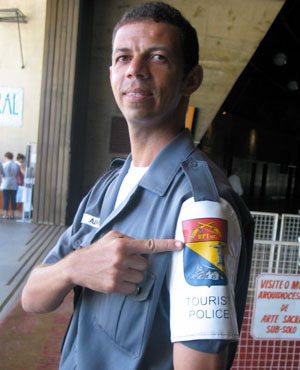RIO DE JANEIRO, BRAZIL - Safety is always a concern in Rio - so play it safe and don't invite trouble by wearing any jewellery while walking the streets and especially not on the beaches. Only take local currency with you and leave your credit cards and valuables in your hotel safe.
Canadians need a visa to visit Brazil and it is not cheap. One can be obtained from the Brazilian consulate in Toronto for about $100 and it takes about two weeks.
Rio's transportation system is a mix of a very efficient, safe and clean subway system that services most of the city and costs about 65 cents for a one-way fare, to an unpredictable "flag down" bus service which connects most of the beach communities.
A good way to familiarize yourself with this sprawling city is to hire a driver and guide from a local tour company. It costs about $85 U.S. for a four-hour tour but it's far better than tour buses that cost around $45 U.S. but waste at least one hour of their four-hour tour picking up and dropping off passengers. Tour buses also offer multi-lingual explanations during tours that can become quite annoying.
There are "tourist police" assigned to most of Rio's major attractions. They are soldiers specially trained to assist tourists in need.
There is little pollution in Rio - most of the city's public transportation system runs on natural gas.

Above: The tourist police make sure visitors are not disturbed.
Hotels in Rio are cheaper than most in resort communities like this. Even the plush five-star Copacabana Palace, located across from the city's most popular beach of the same name, is affordable at rates starting at $400 a night. This hotel would cost double anywhere else.
Food and drink in Rio are very inexpensive. A large glass of local beer (highly recommended) costs about 60 cents and a traditional meal called churrascaria, where an endless stream of barbecued meats are delivered to your table on large skewers, costs about $20.
Many people arrive in Rio aboard cruise ships. There are many lines offering South American cruises but one of the most popular is Silversea's Rhythms of South America that begins in Buenos Aires and ends in Rio. Go to www.silversea.com for details.
The local currency is the real. You get 2.2 real for every one Canadian dollar.
The average daily temperature in Rio is 28C.
The average temperature of the water is 23C.
It rains at least four times a week in Rio, usually in the late afternoon for a few hours or overnight but not for very long.
You can actually take guided tours of the city's notorious slums, known as favela. The largest favela is called Rocinha that overlooks the beaches of Copacabana and Ipanema.
No Canadian airline flies into Rio but Air Canada flies to Sao Paulo and they will arrange for a connecting flight to Rio with one of their airline partners. If you fly with a U.S.-based airline to Rio, avoid returning to Canada via Miami. Security restrictions and delays there could make you miss your connecting flight.
About the Author
Marc Atchison is a veteran journalist and a seasoned traveller with more than 20 years of travel writing experience. As the former Travel Editor of the Toronto Star, Canada's largest newspaper, and now Editor-in-Chief and Senior Writer for TraveLife magazine (Canada) and travelife.ca, Marc has been to over 100 countries in the world. Japan is one of his favorite destinations and he's been there on numerous occasions.